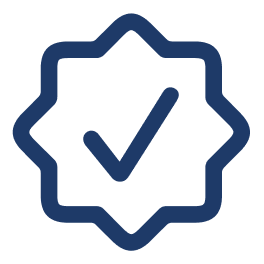Understanding reported speech and how it applies to commands and questions is crucial for English learners aiming to improve their fluency. Reported speech, also known as indirect speech, is the way we express what someone else has said without quoting their exact words. Mastering this concept expands both your written and spoken communication skills in English.
What is Reported Speech?
Reported speech differs from direct speech, which involves quoting the speaker’s exact words. For example, if John says, “I am going to the store,” a direct speech report would use quotation marks around John’s words. However, in reported speech, you might say, “John said that he was going to the store.” Notice how the tense changes in reported speech to maintain consistency.
What's your English level?
Discover your level now: A1/A2/B1/B2/C1/C2 and GET your certificate!
Converting Questions into Reported Speech
When converting questions into reported speech, it’s important to understand the changes in sentence structure. Unlike statements, questions often require alterations in word order and verb tense.
For example, if Mary asks, “Where are you going?” you would report this question by saying, “Mary asked where I was going.” Here’s a table summarizing how to convert different types of questions:
| Direct Question | Reported Question |
|---|---|
| “What is your name?” | She asked what my name was. |
| “Are you coming?” | He asked if I was coming. |
| “When will they arrive?” | They asked when they would arrive. |
Questions starting with verbs like “do” or “does” often convert by adding “if”. For instance, the question, “Do you like apples?” would become “He asked if I liked apples.” More examples and explanations can be found on professional language websites like the British Council or the Cambridge Dictionary.
Turning Commands into Reported Speech
Commands and requests expressed in direct speech also undergo modifications when reported. Typically, ‘tell’ or ‘ask’ introduces reported commands, followed by an object and to-infinitive form.
For example:
- Direct: “Close the door,” he said.
- Reported: He told me to close the door.
Notice how the imperative verb “close” changes into the structure “to close” in reported speech. Here’s a basic strategy for reporting commands:
| Direct Command | Reported Command |
|---|---|
| “Please sit down.” | She asked me to sit down. |
| “Turn off the lights.” | He told us to turn off the lights. |
| “Don’t be late.” | She told me not to be late. |
Commands with “do not” often convert by using “not to”, such as “Do not speak” becoming “He told me not to speak.”
Practical Tips for Mastering Reported Speech
Here are several tips to help improve your use of reported speech:
- Practice regularly by transforming direct speeches into reported speeches, focusing on changing tenses, pronouns, and expressions of time and place.
- Familiarize yourself with common reporting verbs like ‘say’, ‘tell’, ‘ask’, and practice using them correctly.
- Test your understanding with exercises and quizzes available online.
You can check your English level using the GET Global English Test.
Reported speech forms an integral part of communicating past interactions in a clear and concise manner. By changing direct speech into reported speech successfully, you’ll become more adept at delivering information in English.
Examples of Reported Speech in Action
Let’s consider some examples of reported speech to better understand its application in real-life situations:
Example 1: Direct speech: “I’ll call you later.” Reported speech: She said that she would call me later.
Example 2: Direct speech: “Who wants to join us for lunch?” Reported speech: He asked who wanted to join for lunch.
Statistics on Reported Speech Usage
According to a recent language study, reported speech is used in approximately 70% of everyday conversations in English-speaking countries. This underscores the importance of mastering this aspect of language for effective communication.
Case Study: Reported Speech in Business Communication
In a corporate setting, understanding reported speech is vital for accurate transmission of instructions and feedback. A case study revealed that employees who were proficient in using reported speech demonstrated clearer and more successful communication outcomes.
Q&A Box: Reported Speech Troubleshooting
Q: What should I do if the tense in the reported speech changes from past to present?
A: In such cases, ensure that the time reference in the main verb aligns with the reported speech. For instance, if the main verb is in the past tense, the reported speech should also reflect the past.
Enhancing Fluency with Reported Speech
Being adept at reported speech not only enhances your language skills but also adds depth to your communication. It allows you to convey information accurately while maintaining the essence of the original message.




